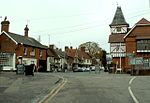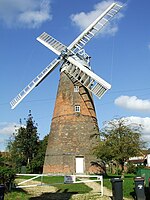St Mary the Virgin's Church, Stansted Mountfitchet
Church of England church buildings in UttlesfordChurches preserved by the Churches Conservation TrustEnglish Gothic architecture in EssexEnglish churches with Norman architectureGrade II* listed churches in Essex ... and 1 more
Stansted Mountfitchet

St Mary the Virgin's Church is a redundant Anglican church near the village of Stansted Mountfitchet, Essex, England. It is recorded in the National Heritage List for England as a designated Grade II* listed building, and is under the care of the Churches Conservation Trust. It stands about 1 mile (1.6 km) to the southeast of the village in the grounds of Stansted Hall. The church has been listed because of its "historical value and internal features".
Excerpt from the Wikipedia article St Mary the Virgin's Church, Stansted Mountfitchet (License: CC BY-SA 3.0, Authors, Images).St Mary the Virgin's Church, Stansted Mountfitchet
Church Road, Uttlesford Stansted Mountfitchet
Geographical coordinates (GPS) Address External links Nearby Places Show on map
Geographical coordinates (GPS)
| Latitude | Longitude |
|---|---|
| N 51.8953 ° | E 0.2092 ° |
Address
Saint Mary the Virgin Church
Church Road
CM24 8UB Uttlesford, Stansted Mountfitchet
England, United Kingdom
Open on Google Maps








